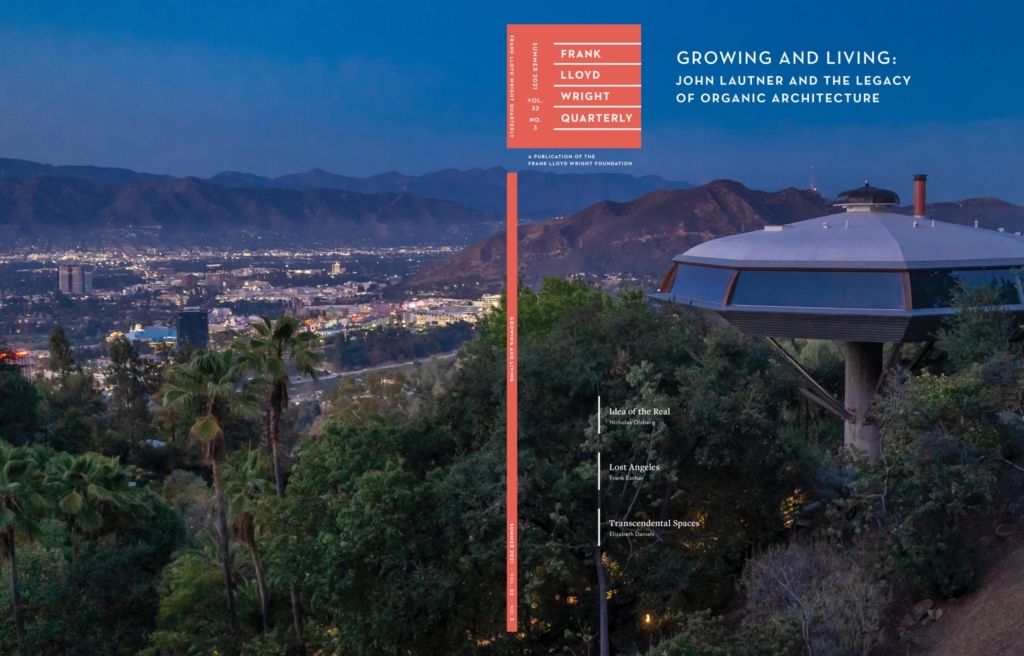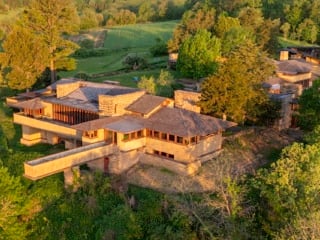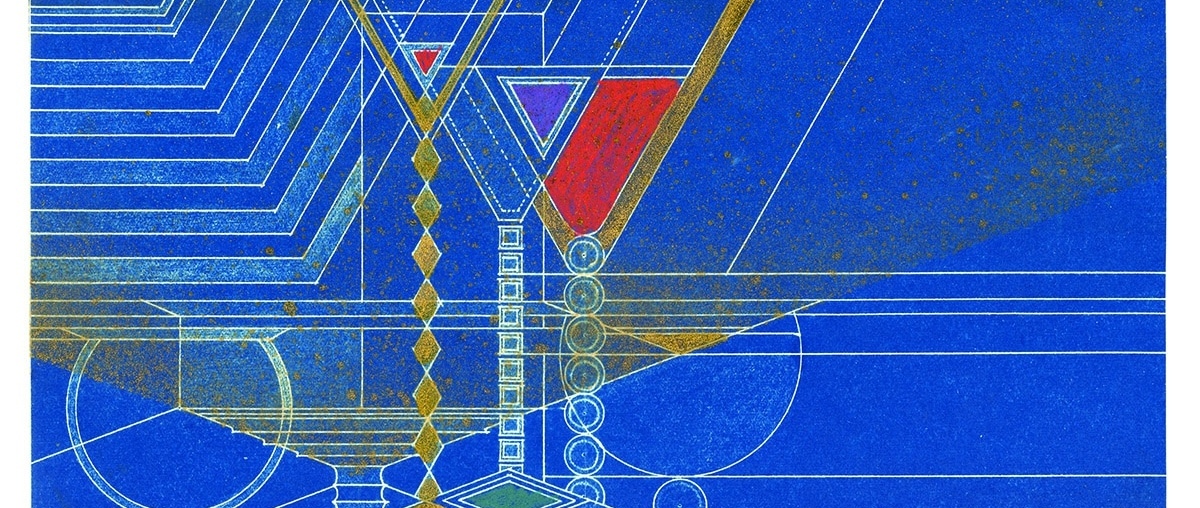
In the Abstract: Eugene Beyer Masselink
Frank Lloyd Wright Foundation | Sep 5, 2021
A brief look at the artistry and influence of a devoted Taliesin Fellow.
Artist and designer Eugene Beyer Masselink was among the earliest of Frank Lloyd Wright’s apprentices at the Taliesin Fellowship. A learned artist, Masselink had exhibited his work, studied with abstract painter Hans Hoffman, and travelled Europe by car – all before he arrived at the Taliesin Fellowship in 1932. Enrolling as a painter, not an architect, he was initially put to work constructing models, such as those for the S.C. Johnson Administration Building and Broadacre City projects, and often found himself clearing brush or constructing buildings at Taliesin, in Spring Green, Wisconsin.
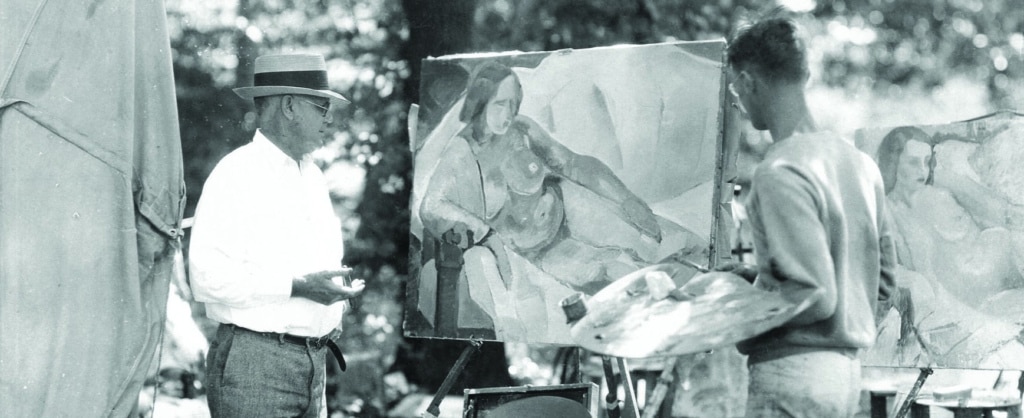
However, within the first year, Masselink was appointed the personal secretary to Wright. This was a herculean task. He was now handling all the business matters for the Fellowship, as well as Wright’s practice. This meant he was often the first point of contact with potential clients, vendors, contractors, reporters, admirers, et al. Despite these demands, Masselink still found time to create – including landscapes and portraits of his peers at the Fellowship.
His role in the history of the Taliesin Fellowship becomes even more relevant when one considers that the nearly 30 years he was there—from 1933 until his death at age 51 in 1962—overlapped with the first three decades of the Fellowship and the last three decades of Wright’s life, which were undoubtedly his most prolific.
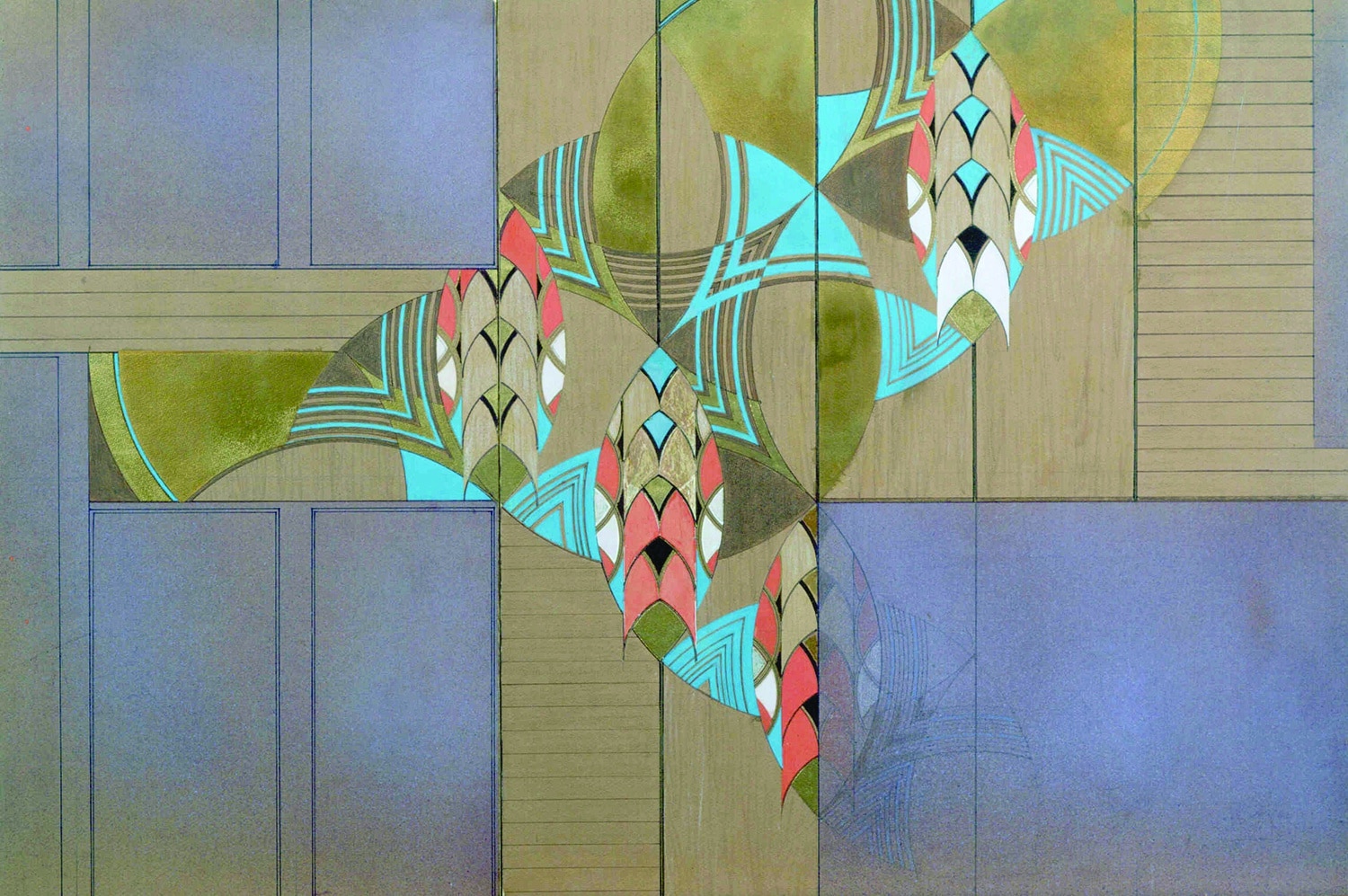
Yucca blossoms mural, paint and painted wood on grasscloth, 1956
Eventually, to fit within Wright’s design aesthetic, Masselink had to eschew much of his modern painterly ways and begin experimenting with abstract line drawing studies using the three essential tools of the Wright trade—the T-square, the compass, and the triangle. Known as abstract pattern studies, the exercises developed by Masselink, and others, in these early years at Taliesin were produced through a process by which an overall natural form (flower, tree branch, cactus, landscape etc.) was graphically reduced to an assemblage of geometric shapes and typically set onto an angular grid.

Abstract pattern study, paint on layered board collage, 1950
These graphic abstractions would become Masselink’s signature style and would eventually adorn everything from print publications, to logos, to murals, to personal notes and party invitations. These singular, hand-crafted artworks lend an intimacy to Wright’s work. They are a fine arts parallel to Wright’s organic architecture that coalesced from the comradery and community of the Taliesin Fellows, and their deep respect and admiration for Wright.
Masselink’s design aesthetic and philosophy of abstraction continued well on after his passing, each generation of Taliesin students embracing his creative spirit and finding inspiration.
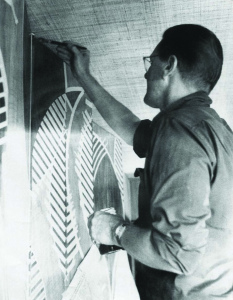
Masselink installing mural, 1956
SUBSCRIBE TO THE QUARTERLY
To be among the first to see the summer 2021 issue of the Frank Lloyd Wright Quarterly magazine, subscribe to the magazine by becoming a member.
Frank Lloyd Wright Foundation members receive the Quarterly as part of their exclusive membership benefits. The Quarterly offers readers an innovative look into the past, present, and future of Frank Lloyd Wright’s legacy through thoughtful graphic and written explorations of the legendary architect’s work and the community it has created.
